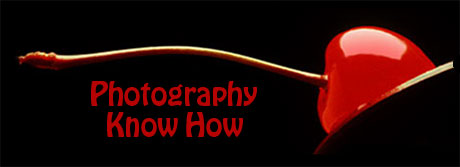The most significant change in the Canon PowerShot S95 Digital Camera is its addition of a high definition 720p (1,280 x 720 pixel) movie mode, with stereo sound. This compares very favorably to the standard-definition VGA and QVGA movie modes of the S90, even if the new HD mode uses a slightly lower frame rate of 24 frames-per-second. The Canon S95’s movies are still saved using H.264 compression, in a .MOV container.
The body of the Canon S95 is quite similar to that of its predecessor, although it’s a fraction of a millimeter less tall and deep, and a few grams heavier. The front panel has some added texture, but otherwise you’d be hard put to tell the cameras apart without seeing the model number.
That’s not to say there aren’t any visible hardware changes, though. The Canon PowerShot S95 now sports a mini HDMI connector, allowing it to be plugged into newer high-definition displays. It also adds support for the latest higher-capacity variant of the Secure Digital card standard, dubbed SDXC.
A new High Dynamic Range (HDR) scene mode is also offered, where the camera combines three sequential images at various exposures to improve dynamic range, though it requires the use of a tripod. One other change of note is that Canon has added some extra aspect ratio settings to the S95, such as 3:2, 1:1, and 4:5, catering for a greater variety of print formats without the need to crop images post-capture.
Other specifications are largely unchanged from the previous PowerShot S90. These include a stabilized 3.8x optical zoom lens with an uncommonly bright f/2.0 aperture at its useful 28mm wide angle, falling to an f/4.9 aperture at its moderate 105mm telephoto position, a reasonably high resolution 460,000 dot 3.0-inch LCD panel, five-mode flash, ISO sensitivities from 80 to 3,200 equivalents at full resolution, and full manual exposure capability. Power comes courtesy of an NB-6L lithium-ion rechargeable.
The Canon PowerShot S95 started shipping in the USA from late-August 2010, priced at around US$399 — somewhat cheaper than its predecessor.
Canon PowerShot S95 User Report
by Shawn Barnett
Fresh off reviewing the Panasonic LX5, I’m impressed by the similarities between the it and the Canon PowerShot S95. Both have a 3.8x, f/2.0, image-stabilized lens, a 3-inch LCD, a 10-megapixel sensor, a pop-up flash, a zoom toggle surrounding the shutter button, and more dials than the average pocket digital camera. Of course, there are differences as well. The Canon S95’s focal length ranges from 28-105mm, while the LX5’s covers a wider 24-90mm. The S95’s LCD is a 4:3 aspect ratio, while the LX5’s is 3:2. The Canon S95 is also smaller and has no hot shoe, while it does have a unique reprogrammable front Control Ring. They are both aimed at the premium pocket market, and also differ only slightly from their predecessors. For its part, the Canon S95 is improved in some important ways.
Look and feel. Canon did a great job making the S95 compact, yet with a bright lens and larger sensor than the average digital camera. Dressed all in black, the boldest element of the Canon S95 is the bright white Canon logo, embossed just as it is on the company’s digital SLRs. Everything else appears military-grade, designed for stealth, perfect for street photography. Even the S95 logo the font around the lens barrel are a dark gray, unlike the S90’s bright white. Other than that, little has changed on the front of the S95, except that the microphone hole has been replaced with microphone holes at the lower left and right of the lens to accommodate the Canon S95’s stereo audio recording with the new 720p HD movie mode.
Read the full review at Imaging Resource …
DigitalRev TV got invited to a Canon product press workshop for the announcement of a couple of new PowerShot cameras – the S95 and the SX130. We take a quick hands-on preview of the S95, summarising some of the upgrades and taking a few test shots and movies.




I bought this to reapcle the kit lens (18-55) for my 450d, I also got to put my 28-75mm on the shelf. The focal range of this lens was the big attraction for me. I am happy with the look and feel of this lens, nice and tight, no creeping with camera down. Manual focus overide, will focus fairly colse too. Focus is fast and quiet, the IS function is quiet and works great, Canon gets better at this with every new lens. background blur is very nice as Canon states a round apature opening to aid in this. It is very sharp at the point of focus, even wide open. Upon reading professional reviews I was almost dissuaded by the vignetting and chromatic abberation issues. They both only come into play at very wide angles and you can help the CA by stopping down. Every lens has its flaws, but if it was perfect what would you buy from them next year?! Overall I really like this lens and I am glad I purchased it.
I have found from reviews that S95 is more powerful version then S90 with fast click shoot that can never turn off the photographer spirit. For me the most interesting specs is the camera shooting quality which has improved from its earlier version.